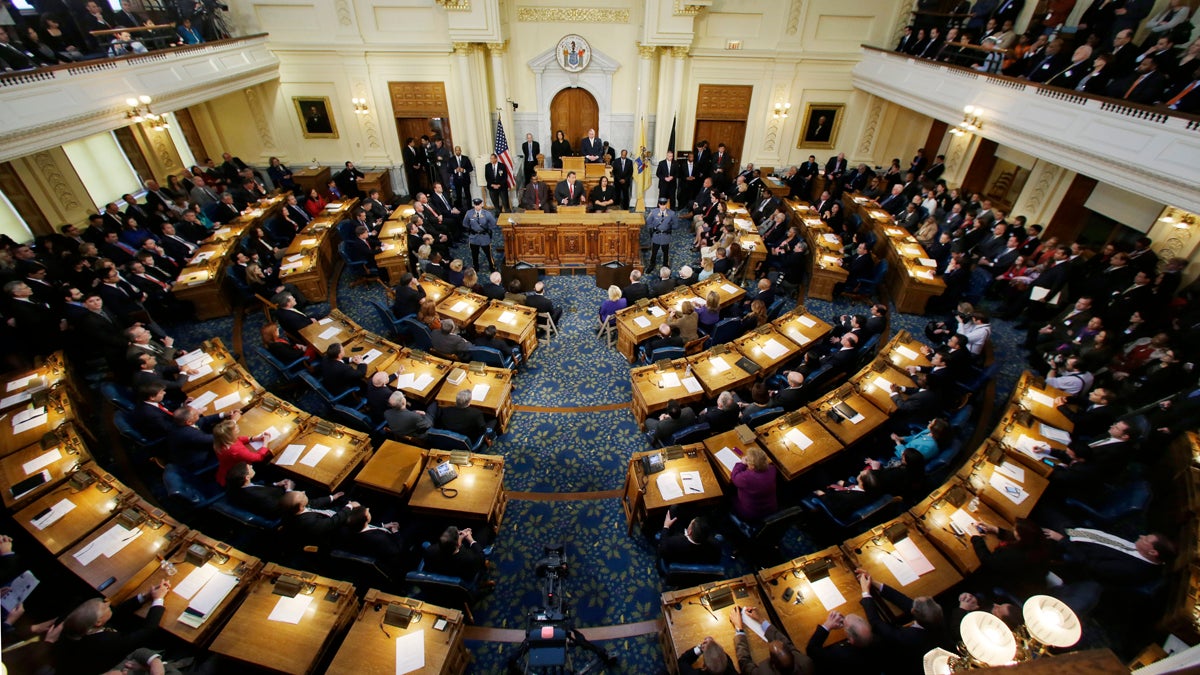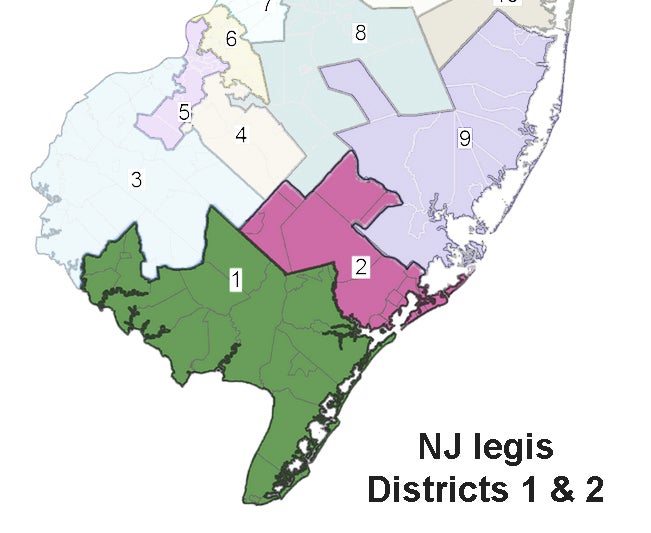All 80 N.J. Assembly seats are up for reelection in 2015

The New Jersey Assembly chamber in Trenton. (AP Photo/Mel Evans)
This year, all 80 seats in the New Jersey General Assembly are up for grabs. The election for the 40 state Senate seats isn’t until 2016.
So what are South Jersey’s hot races going to be?
Patrick Murray, director of the Monmouth University Polling Institute says the two major political parties have a lock on nearly all of the districts. The exceptions could be in the 1st and 2nd districts, both in South Jersey.

District 1
In 2013, Republican Sam Fiocchi defeated incumbent Democrat Nelson Albano in the district that covers parts of Atlantic, Cape May and Cumberland counties.
District 2
In 2013, Democrat Vince Mazzeo defeated incumbent Republican John Amodeo in the district that covers parts of Atlantic County.
That indicates that no single party has those districts locked down to quite the extent of most other districts in New Jersey.
But outside of those districts there won’t be much play in the Assembly contests this year. The way Murray describes it, most districts in New Jersey are gerrymandered to a point where the elections are more-or-less a formality. “It’s not like the voters in that district have a choice,” Murray said. “The choice has already been made by the party leaders.”
In areas nationwide where a single party holds sway, the primary usually serves as de facto Election Day. That’s particularly true in closed-primary states such as New Jersey, where only registered members of a party can vote in that party’s primary.
But in New Jersey, Murray said, even the primaries tend to be locked down before the first voter casts a ballot. Party leadership will have already endorsed a candidate, and challengers who try to oppose the party selection generally stand little chance against the organization.
Though gerrymandering has long been a fact of political life in America in general and New Jersey in particular, Murray said it’s become particularly bad over the past couple of decades. Compounding the problem is that Democrats and Republicans tend to move into areas already dominated by their respective parties, increasing the geographic polarization.
The General Assembly election year normally draws the lowest voter turnout in the election cycle anyway. This year, Murray predicts it will be lower than ever. Maybe in the 10 percent range.
“People are becoming more disconnected from government,” Murray said. “We’re getting less done. Less compromise. It becomes a self-fulfilling prophecy.”
Currently, the Democrats are the majority party in both Houses. In the Senate there are 24 Democrats and 16 Republicans. There are 48 Democrats and 32 Republicans in the General Assembly.
New Jersey’s primary will be on June 2, 2015.
The General election is Nov 3, 2015.
_____________________________________________
This post is part of our South Jersey Politics Blog
WHYY is your source for fact-based, in-depth journalism and information. As a nonprofit organization, we rely on financial support from readers like you. Please give today.




